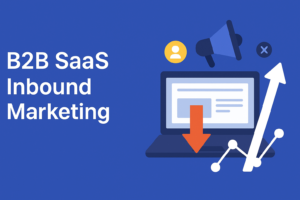For B2B SaaS companies, keyword research is more than just picking popular terms. It’s a strategic process that requires understanding your target audience, what problems they’re trying to solve, and the language they use to search for solutions. With the fast-evolving nature of search algorithms and industry trends, keyword research missteps can impact your entire SEO and content strategy.
This article discusses ten common keyword research mistakes that can hinder your growth and offers insights into optimizing your keyword approach to bring in relevant traffic and high-quality leads.
Mistake #1: Ignoring Search Intent
One of the biggest challenges in keyword research is understanding search intent—the why behind a user’s query. When people type a phrase into a search engine, they’re typically in one of several mindsets: they’re either looking for information, exploring solutions, comparing products, or ready to make a decision.
For B2B SaaS companies, capturing search intent means identifying which stage of the buyer’s journey your audience is in and aligning your keywords with those stages. Using keywords that address informational queries, for example, can bring in readers at the research stage, while keywords with a transactional intent can connect you with those closer to making a purchase. Measuring click-through rates (CTR) and bounce rates for specific keywords can give insights into whether your content is truly meeting user intent.
Mistake #2: Focusing Only on High-Volume Keywords
It’s easy to assume that higher search volumes mean better results, but in B2B SaaS, high-volume keywords are often too broad. These terms can attract a wide audience but may not necessarily reach qualified leads. B2B SaaS buyers usually have specific needs, and broad keywords can bring in traffic that isn’t aligned with those needs, leading to high bounce rates and low conversions.
Instead, look for specific, long-tail keywords that speak directly to your target audience’s needs. These keywords often have lower search volumes but a higher potential to attract decision-makers who know exactly what they’re looking for. Tracking the conversion rate for these keywords can reveal their impact on your bottom line, as long-tail keywords tend to connect with users further along in their buying journey.
Mistake #3: Overlooking Competitor Keyword Analysis
Competitor analysis is a critical part of keyword research. By studying which keywords competitors rank for, you can uncover valuable opportunities, identify gaps in your content strategy, and even spot potential topics you might have missed. In a competitive landscape, understanding what works for others can sharpen your own approach.
Start by examining your top competitors and the keywords driving their traffic. This exercise can reveal areas where you can differentiate, whether it’s by targeting less competitive terms or providing more comprehensive content. Assessing keyword difficulty (KD) and domain authority of competitor keywords helps prioritize which keywords to go after.
Mistake #4: Not Refreshing Keyword Strategy Regularly
Keywords that drove traffic last year may no longer be as effective today. As industries evolve and new search trends emerge, it’s important to revisit and refresh your keyword strategy. A stagnant keyword list can lead to reduced relevance and visibility, especially if competitors are constantly adapting their own strategies.
Regular keyword audits help keep your content aligned with current search behavior. By re-evaluating keyword performance and monitoring organic traffic trends, you can adjust your approach to focus on new opportunities and remain relevant in search results. This is particularly valuable for B2B SaaS companies, where product offerings and industry terminology may change frequently.
Mistake #5: Failing to Segment Keywords by Buyer Persona
B2B SaaS companies often have multiple buyer personas, each with unique roles, concerns, and information needs. Using a single, broad keyword approach can miss the mark, as it doesn’t consider the diverse motivations of each decision-maker involved in the purchasing process.
Segmenting keywords by persona allows you to tailor content to different audience groups, increasing relevance and engagement.
For example, an IT manager may be looking for technical functionality, while a procurement officer is interested in pricing and ROI. Monitoring engagement metrics like average time on page can help determine if the content resonates with each specific persona.
Mistake #6: Ignoring Long-Tail Keywords for Niche Topics
Long-tail keywords, though lower in search volume, are particularly useful in B2B SaaS for targeting niche audiences with specific needs. These keywords capture more precise search queries, often reflecting the questions and pain points of prospects closer to making a decision.
For example, rather than simply targeting “CRM software,” a long-tail keyword such as “CRM software for healthcare providers” addresses a specific audience, increasing the chances of attracting qualified leads. This specificity can result in a higher conversion rate, as users who search for niche terms often have a clearer understanding of what they need.
Mistake #7: Not Using the Right Keyword Research Tools
Having the right tools in your keyword research arsenal is essential for uncovering valuable data and making informed decisions. Without reliable keyword research tools, your data might be incomplete, leading to missed opportunities.
There are many keyword tools available, each offering unique features. Ahrefs, SEMrush, and Google Keyword Planner are popular choices that provide data on search volume, keyword difficulty, and competitor analysis. Using a mix of tools can help you get a well-rounded view of your keyword landscape. Metrics like keyword difficulty and search volume give insights into competitiveness and potential reach, helping you prioritize keywords effectively.
Mistake #8: Overemphasizing Branded Keywords
While branded keywords can enhance brand awareness, they mainly attract users already familiar with your company. For B2B SaaS companies looking to expand their reach, focusing too much on branded keywords can limit exposure to new prospects.
Balancing branded and non-branded keywords is key. Non-branded keywords that align with industry-specific terms or common user queries are particularly valuable for attracting new visitors who may not yet know about your company but are searching for solutions in your area. Monitoring metrics like new vs. returning users can help you gauge the impact of non-branded keywords.
Mistake #9: Not Considering Regional or Industry-Specific Keywords
If your B2B SaaS company operates in multiple regions or serves specific industries, failing to consider regional or industry-specific keywords can hinder your ability to connect with targeted audiences. Different regions may use varying terms or have distinct search behaviors, making it essential to localize your approach.
For instance, users in the US may search for “software,” while those in the UK might look up “software solutions.” Similarly, targeting industry-specific terms ensures your content resonates with the right sector. Tracking geographic-specific traffic metrics helps you understand the impact of localized keyword efforts and refine your strategy accordingly.
Mistake #10: Neglecting Topic Clusters in Keyword Strategy
Single keywords or isolated phrases might not fully capture the complexity of topics in the B2B SaaS world. Topic clusters—where content is organized around a central theme with supporting subtopics—offer a more holistic approach to covering extensive subjects, making it easier for both users and search engines to navigate your content.
For example, if you’re focusing on “project management software,” you can create related pieces that cover specific features, use cases, and industry-specific applications. Topic clusters encourage deeper engagement and improve site authority, as visitors are more likely to explore related content. Monitoring page depth and user journey tracking provides insight into how effectively your topic clusters support user navigation and engagement.
In Closing
By avoiding these common keyword research mistakes, B2B SaaS companies can significantly improve their search engine performance and attract a qualified audience. From understanding search intent to leveraging long-tail keywords and localized terms, a strategic approach to keyword research aligns your content with what your target audience needs. Regularly refreshing your strategy and analyzing metrics like engagement rates, conversion rates, and user journey insights ensures that your keyword research remains effective and continues to drive meaningful results.

vetrivel is an accomplished SEO and digital marketing expert with 5 plus years of experience. dedicated to providing readers with informative and engaging content.




